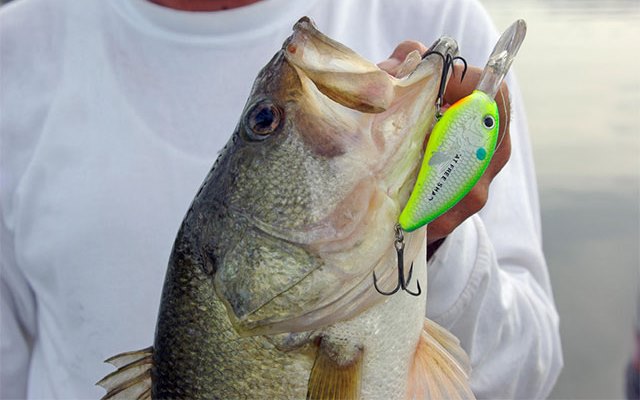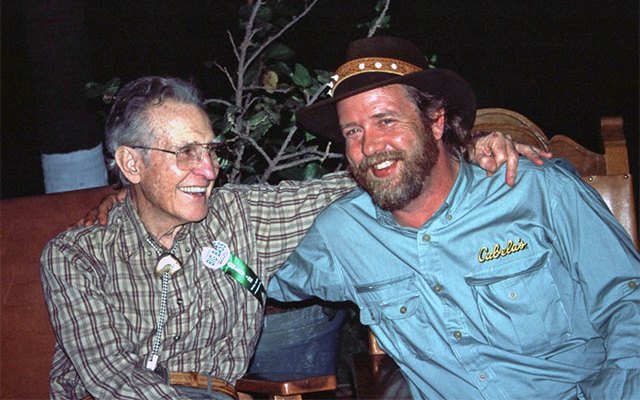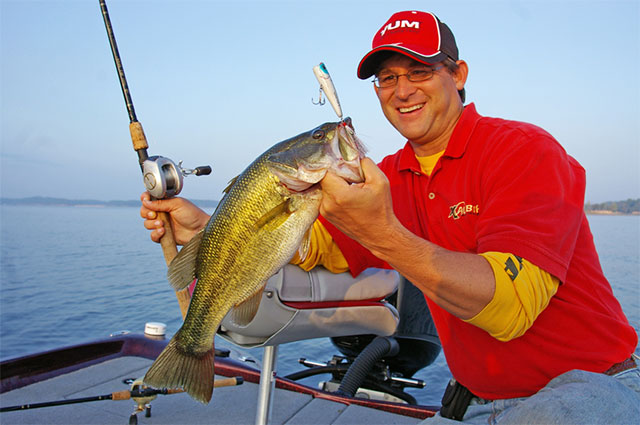
In 2001, I had an opportunity to fish several days with Homer Circle. We were on Mexico’s Lake El Salto, one of the world’s top trophy-bass lakes, filming a TV show. But Uncle Homer, as his friends always called him, arrived three days late because of a stomach illness.
When he finally arrived at the Mazatlán airport after a long flight from Florida, no one was there to pick him up. The airport closed at 10 p.m., but the driver who was supposed to get Homer had forgotten, and Homer sat on a bench outside all night before the apologetic man arrived.
I had already been fishing on El Salto three days when Uncle Homer arrived, but fishing was poor. I hadn’t caught many of the lake’s famed largemouths, and those I had caught were small.
I met Homer as he arrived at the camp, and because he had been ill several days and hadn’t slept all night, I expected him to want to rest a while. On top of that, he was 86 years old. I didn’t figure a man his age would be eager to fish after his ordeal. But he was.
“Get me to the water, Keith,” he said. “I need some fishing to cure what ails me.”
With that, we were off. And half an hour later, Uncle Homer landed his first El Salto bass — a 10-pounder — on his very first cast. Before the afternoon ended, he caught a dozen more trophy fish, including some of the biggest bass I’d ever seen.
I tell you all this to show you what an incredible angler — and person — Uncle Homer was. He lived in Arkansas once and had been appointed to the Arkansas Game and Fish Commission where I worked. When he learned that as we were introduced in the 1980s, we became instant friends. We often corresponded by mail or talked on the phone. He was one of my most important mentors.
I say “was” because Uncle Homer passed away in 2012 at the ripe old age of 97. He remained an active angler and writer until his death. He fished for everything that swam on trips that took him to four continents, but he is best known for his influence in the bass-fishing world.

Uncle Homer Circle (left) and Keith Sutton discuss seasonal bass-fishing tactics after a day on the water at Mexico’s famed El Salto Lake.
He was one of the most popular, prolific and influential bass-fishing writers in the history of the sport, with a column that ran from 1968 through 2002 in Sports Afield. He also wrote numerous books on bass fishing, including The Art of Plug Fishing (1965), New Guide to Bass Fishing (1972), Worming and Plugging for Bass (1972), Circle on Bass (1996) and Bass Wisdom (2000). He was inducted into the Bass Fishing Hall of Fame in 2001.
Fortunately for me, and for you, Uncle Homer loved sharing his endless knowledge about catching the bass he so dearly loved. And during those days together on El Salto, I had the opportunity to record several interviews with him about bass fishing through the seasons.
One of those interviews seems particularly timely to share, one where Uncle Homer, in his down-to-earth style, discussed methods for catching largemouths during the fall turnover period. I share it with you now.
“Turnover time is short but sweet,” said Uncle Homer. “It’s caused by the occurrence of early winter winds. They pound waves against shorelines and chill surface waters to make them heavier. Water reaches its weightiest point at 39.2 degrees.
“When surface waters heavy up,” he continued, “they sink beneath the warmer, lighter waters below, which rise to the surface and replace the entire upper realm. Thus the logical term ‘turnover.’”
Big bass sense this oncoming annual period and instinctively respond.
“Wise old lunkers know their food supply is going to be scarce,” said Uncle Homer, “so they must eat and lay on extra fat to tide them over the scarce-food period ahead. Yet, they also must conserve energy, so exertions are held to a minimum.”
Circle told me catching these bass requires the angler to develop two mind-sets. One is to imagine cruising bass looking for a school of oversize minnows or shad. The other is to picture bass in seclusion after gorging on a belly full of prey.
“For cruising bass, think deep,” he suggested. “Look for dark drop-offs around old creek channels, bluffs, steep points, cliffs and railroad trestles. This calls for lures designed to work at deepest depths.
“For probing dark shores, try deep-running crankbaits, covering a lot of territory to cross paths with crusading lunkers. That failing, try weighted sinking lures like jigheads with various soft-plastic, and hair, bodies. Walk them down steep shorelines, nudging bottom all the way to your boat. Also, bring them in at all levels to see if bass are hanging at certain depths for reasons known only to them ... and they aren’t talking!”
For bass in seclusion, Uncle Homer recommended looking for dense weeds, lily pads, brush or other heavy cover abutting dark water, and think “s-l-o-w!” This calls for lures that have do-nothing appeal at idle because a belly-full bass won’t chase them.
“Especially try vertical jigging,” he said. “Rig a soft-plastic crawfish body on a 1/2-ounce jighead. Mosey quietly along deep shoreline covers with a vertical line suspending the lure from top to bottom. Lift and lower it gently, s-l-o-w-l-y, temptingly, to trigger instinctive slurps from non-hungry whoppers. Keep your eyes locked on the line where it kisses the surface.
“At the slightest change in tension, loose or taut, or even a change in feel ... set the hook! Turnover time could turn your entire year into a keeper memory. Go for it!”
Supplement Plan for Riding (Infographic)

Focus on Fish: Tips on How to Take Better Fishing Photos


Copyright © www.mycheapnfljerseys.com Outdoor sports All Rights Reserved